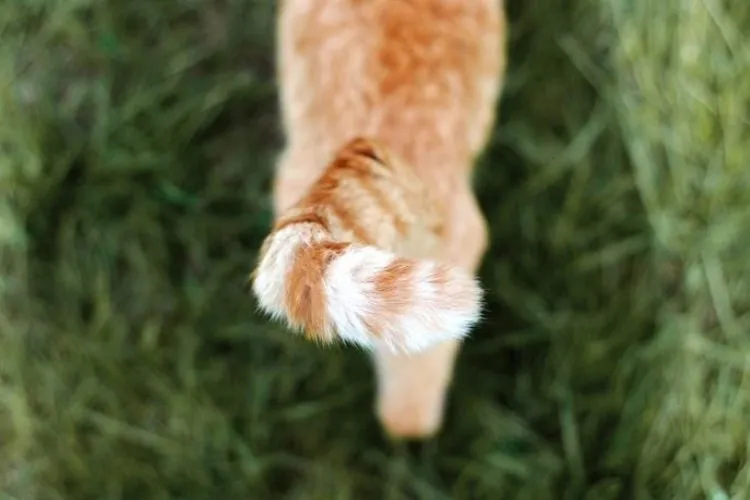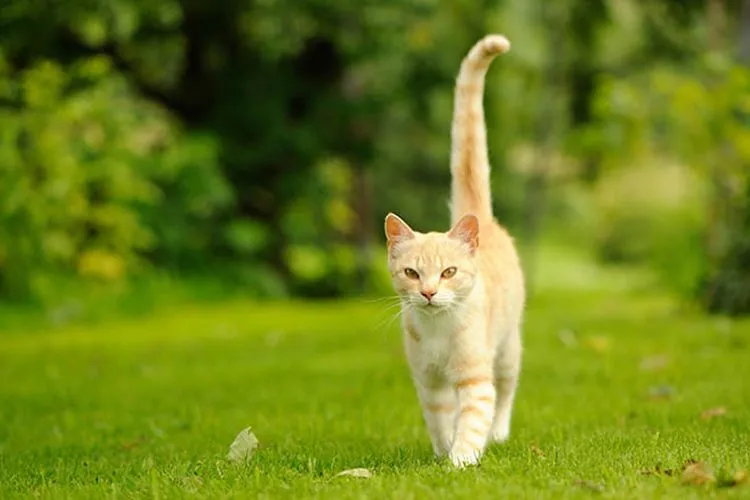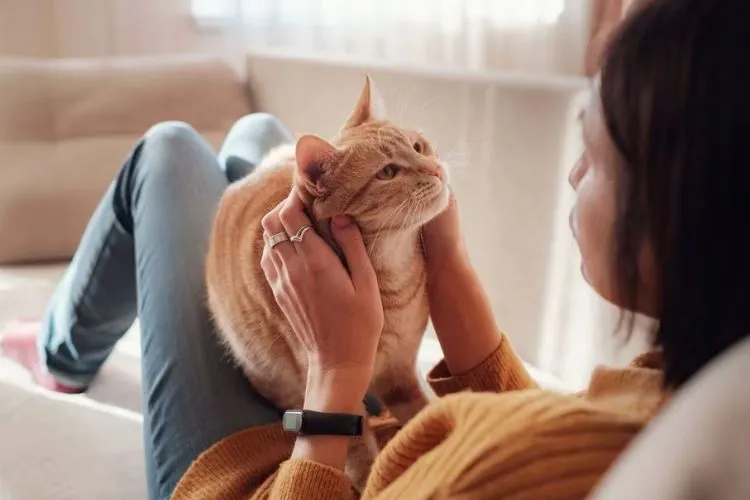Cats are enigmatic creatures, often displaying mysterious behaviors that baffle their human companions. One such intriguing behavior is tail wagging.
While we commonly associate tail wagging with dogs, many cat owners have witnessed their feline friends wagging their tails as well.
But why do cats wag their tails?
In this article, we will delve into the fascinating world of cat behavior and explore the various reasons behind tail wagging.

🐾 Understanding Cat Tail Language
To decipher the messages behind a cat’s tail wagging, it is essential to understand the different types of tail movements and their meanings.
A cat’s tail can be a powerful communication tool, providing valuable insights into their emotions and intentions.
Tail positioning and posture also play a pivotal role in decoding a cat’s body language. A high and straight tail often indicates confidence or aggression, while a tucked or lowered tail suggests fear or submission.
By combining tail movements and body posture, we can gain a deeper understanding of a cat’s overall behavior.
🐾 why do cats wag their tails? Reasons Behind Tail Wagging
- Excitement and Greeting: Cats often wag their tails in excitement when they see their favorite humans. This happy wagging is akin to a dog’s tail wag and serves as a sign of affection and anticipation. It is their way of expressing joy and eagerness for attention or play.
- Contentment and Happiness: Contrary to popular belief, tail wagging in cats can also indicate contentment and happiness. When a cat is relaxed and comfortable, they may gently sway or flick their tails from side to side. This subtle movement signifies a state of tranquility and overall well-being.
- Hunting and Play: Tail wagging during hunting or play is a natural instinct for cats. Their prey drive triggers an intense focus, and their tails rapidly wag in anticipation or excitement. It is common to observe this behavior when cats are engaged in interactive play with toys or during stalking behaviors.
Misconceptions about Tail Wagging
It is imperative to debunk common misconceptions regarding tail wagging in cats. One prevalent misconception is assuming that tail wagging always indicates happiness.

While it can indeed signify positive emotions, tail wagging in cats is a more nuanced form of communication. Context matters. For example, a cat wagging its tail vigorously while growling or hissing may be expressing agitation or aggression, not happiness.
Understanding the full range of tail movements and accompanying body language is crucial in correctly interpreting a cat’s emotional state.
By considering the entire context, we can avoid misjudging a cat’s intentions and respond appropriately.
Reading Cat Body Language
To better comprehend tail wagging in cats, it is essential to pay attention to other body language cues as well.
A cat’s overall demeanor, facial expressions, ear position, and vocalizations can provide valuable insights when deciphering their behavior.
For instance, a cat with an erect tail, relaxed posture, and softly dilated eyes may be indicating that they are comfortable and approachable.
On the other hand, a cat with a puffed tail, flattened ears, and narrowed eyes might be feeling threatened or defensive.
By observing and understanding these combined body language signals, we can gain a more comprehensive understanding of a cat’s emotions and intentions.
Tips for Interacting with Cats
To foster a positive and fulfilling relationship with your feline companion, consider these pro tips for interacting with cats:

- Respect Boundaries: Pay attention to a cat’s body language and respect their personal space. Avoid overwhelming them with excessive petting or attention if they appear uncomfortable or show signs of wanting to be alone.
- Provide Enrichment: Enhance your cat’s environment with toys, scratching posts, and interactive play sessions to engage their natural instincts. This can help prevent boredom and destructive behaviors.
- Positive Reinforcement: Use rewards and treats to encourage desirable behaviors. This will reinforce positive interactions and create a rewarding experience for your cat.
- Understand Individuality: Remember that each cat is unique, with their own preferences and personality traits. Take the time to get to know your cat and understand their specific needs and boundaries.
🐾 Frequently Asked Questions (FAQs)
Cats may wag their tails while lying down and purring as a sign of contentment or simply to express pleasure and relaxation. It is often a result of being in a comfortable and happy state.
Tail wagging during petting can have different meanings depending on the individual cat. While some cats may wag their tails to show enjoyment and satisfaction, others may wag their tails as a sign of overstimulation or discomfort. It’s important to observe your cat’s overall body language and adjust your actions accordingly.
Tail wagging during sleep is usually associated with dreaming or active sleep. It is a natural reflex and typically nothing to worry about. It’s best to let sleeping cats rest undisturbed.
Tail wagging, particularly slow and gentle movements, can indeed indicate happiness in cats. It signifies their relaxed and content state of mind. However, it is crucial to consider the overall context and body language to accurately interpret a cat’s emotions.
Some cats may wag their tails when you talk to them as a response to the sound of your voice. It can be a sign of attention and engagement. However, as with other types of tail wagging, it’s essential to evaluate the cat’s overall body language to understand their reaction accurately.
Fast tail wagging in cats generally indicates excitement, stimulation, or agitation. It often occurs during high-energy play, hunting-like behaviors, or when your cat is experiencing intense emotions, such as fear or frustration.
Tail movements while drinking water can be attributed to a cat’s heightened awareness and vigilance. It is a reflexive behavior, possibly indicating that the cat feels vulnerable while drinking and wants to keep an eye out for any potential threats.
When a cat’s tail is wagging from side to side rapidly, it is usually a sign of agitation, irritation, or aggression. It is important to be cautious and give your cat space, as this type of tail wagging might lead to defensive behavior.
Conclusion:
Cats possess a rich and complex form of communication, and their tail language plays a vital role in expressing their emotions and intentions.
Tail wagging in cats can signify various meanings, including excitement, contentment, and instinctual behavior.
By observing a cat’s tail movements in conjunction with their overall body language, we can gain valuable insights into their world.
Remember to pay close attention to context and avoid misinterpreting a cat’s message. With patient observation and understanding, we can deepen our bond with these enigmatic creatures and create a mutually fulfilling relationship.
